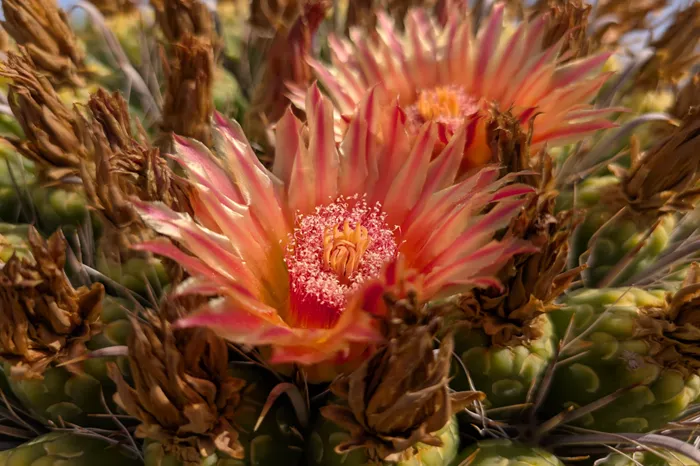PHOENIX, AZ – Although it’s fall in the Valley, recent weather reports may lead one to believe it’s still summer. For several consecutive years, summer temperatures have lingered into October in the Phoenix area. This trend affects not only residents but also the desert’s plant life.
While Arizona’s plants are accustomed to arid conditions and high temperatures, they are struggling to adapt to the longer, hotter, and drier summers seen in recent years.
Katie Ann Franklin, program director at V&P Nurseries in Queen Creek, highlighted the impact of hotter nights on plant health. “When evenings don’t cool down, and we experience extended heat—much of it from concrete—it affects the overall health of plants,” she explained. Without a nighttime cooling period, plants cannot recover, leading to stress signals that attract pests. These pests can increase the risk of disease, making it difficult for plants to recover.
Franklin noted that Arizona boasts a unique biome, supporting both native desert and subtropical plants. The subtropical varieties attract newcomers from California and other areas known for lush, colorful plants. However, Franklin described these subtropical plants as “adapted” to the local climate.
This summer has not only been hotter than usual but also drier. The Valley typically experiences two rain cycles: one in summer during the monsoon season and another in winter. “Extended summers prevent native and adapted plants from receiving the necessary water to withstand high temperatures,” Franklin said.
These climate challenges coincide with Arizona’s ongoing water shortages. Water conservation has become an everyday topic at V&P Nurseries, which benefits from various water sources in Queen Creek. Franklin mentioned that the nursery is also focused on developing new drought-resistant plant varieties. “We are collaborating statewide to identify which varieties can thrive as temperatures continue to rise and water becomes scarcer,” she added.
The extended summer heat affects not only existing plants but also nursery operations. Franklin expressed concern about ensuring winter plants are planted on time, as customer demand may fluctuate due to the heat. “We rely on quickly turning our inventory. If delays occur or if people avoid shopping in the heat, it creates a backlog,” she explained.
Franklin emphasized the importance of maintaining the integrity of live goods. “While we are increasing our inventory, root systems have a limited lifespan. If we don’t act quickly, the quality of our plants can deteriorate.”
As V&P Nurseries strives to produce more drought-resistant plants for the intense October heat, Franklin hopes the community will appreciate the local flora. “We want people to engage with their environment. It’s our responsibility to care for the plants that support us.”
To assist struggling plants during extreme heat, Franklin recommends planting shade trees. These trees provide shade for nearby plants, helping to keep the ground cooler.
As the saying goes, the best time to plant a tree was 20 years ago; the second-best time is today.
Related topics:
- European Forest Plants Are Moving West: Study Indicates Nitrogen as the Primary Factor
- How Thirsty Are Your Crops? Understanding Parched Plants
- Scientists Develop “Super” Plants to Tackle Climate Change


